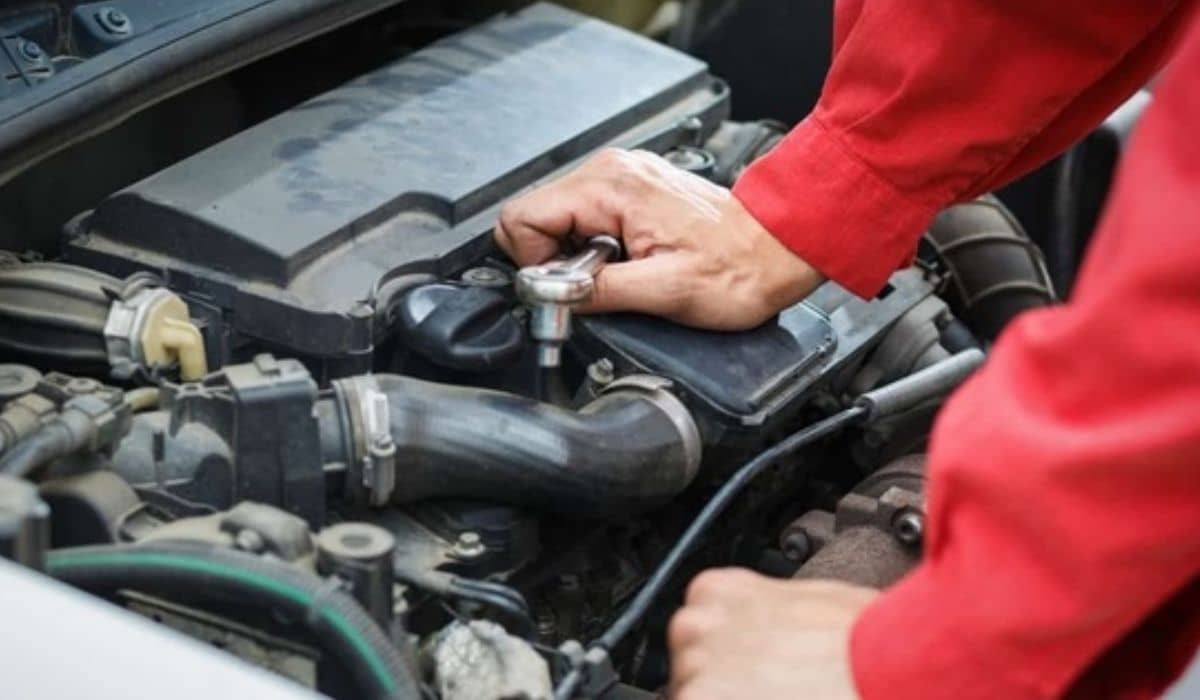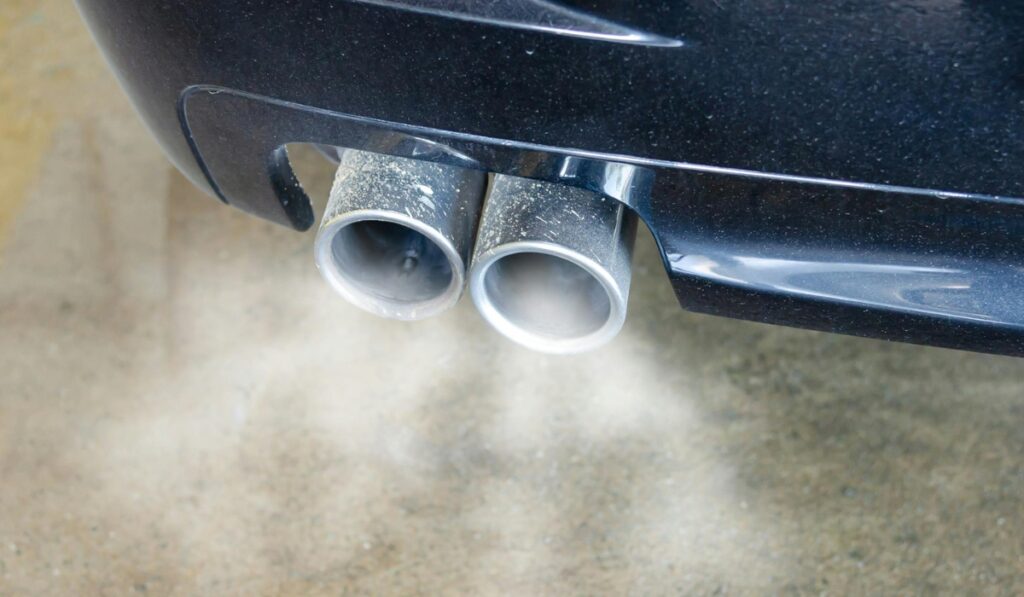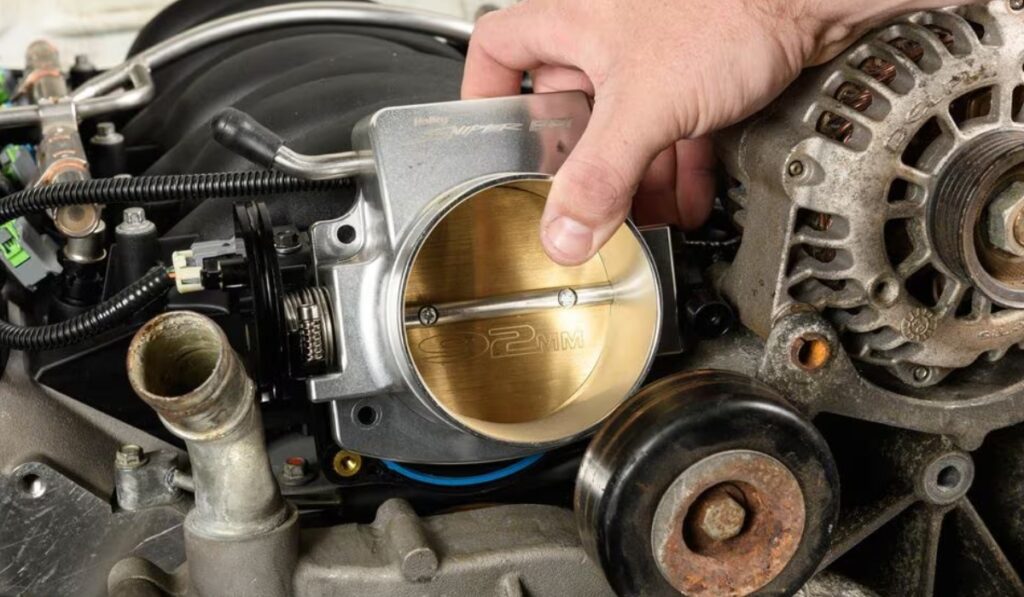The first sign of trouble is often a distinctive rotten egg or skunky smell. You turn on the air conditioning in your car, and suddenly there’s the scent of gas wafting through the vents. What gives? Why do I smell gas in my car when the AC is on?
There are a few possible culprits behind this unpleasant and potentially dangerous situation. Getting to the root cause and addressing it properly is imperative.
Driving around oblivious to the implications of that noxious odor can put you at risk of being stranded or causing an accident. Not to mention breathing gas fumes for an extended time isn’t healthy.
Potential Causes of the Gas Smell
There are a handful of common issues that can result in gasoline vapors entering your car’s cabin air supply. Pinpointing which one is leading to the gas smell will bring you closer to a solution. Consider the following leading theories:
Evaporative Emissions System Leak:
Modern vehicles have an evaporative emissions system that captures and recycles fuel vapor from the gas tank and fuel system rather than releasing it into the atmosphere.
If there are cracks in a hose, loose fitting or hole in a component, raw fuel vapors can escape from this closed system. Turning on the A/C utilizes the ventilation system that could suck up those stray vapors and bring them inside your car.
Fuel Tank Leak:
Your car’s fuel tank system is made up of the fuel tank, filler neck, fuel filler cap, fuel lines, and more. Problems like corrosion, cracks, faulty parts, or loose fittings can all cause leaks. The leaked gasoline evaporates easily. So those vapors can travel and permeate through your AC system.
Faulty Fuel Injector:
Fuel injectors delivering too much gasoline into the combustion chambers of your engine cylinder can create excess vapors that get pulled into the intake manifold and enter the interior ventilation system from there.
Failed Air Filter:
The cabin air filter is designed to remove allergens and debris before air enters your car interior ventilation system. But gases can still pass through.
If the cabin air filter fails totally, it may allow higher levels of evaporated fuel and engine emissions to enter the system and reach your nose.
Pinpointing the specific source of the gas smell will take further diagnosis and testing. Don’t ignore an overpowering gasoline odor while driving. Exposure to high concentrations of gas fumes can cause dizziness or even loss of consciousness.
The best course of action is to safely pull over, exit the vehicle and contact help promptly. Calling for roadside assistance or a tow to a qualified mechanic is the wisest move.
Steps to Diagnose the Source of Gas Fumes
Sniffing gas inside your vehicle should spur you to pull over and call for assistance without delay. Continuing to drive around ignoring the potential predicament puts yourself and others in jeopardy.
Once you’ve gotten out of immediate harm’s way, diagnosis can begin to reveal exactly where gasoline or fuel vapors entered the car’s interior. There are two main areas a qualified auto technician will explore – the ventilation system and the fuel system. Potential test procedures undertaken might include:
Inspecting the Engine and Components
A mechanic will first want to lift the hood and complete a visual inspection, looking to see if there are any loose parts, damaged components or obvious leaks around the engine area and fuel delivery system. Warning signs like wet spots, corrosion or cracked seals could offer early clues.
Testing the EVAP System
The technician can then conduct a pressure test on the EVAP system. First, they seal off the various sections then introduce smoke, air pressure or gas into the system one area at a time to detect leaks evident by seeping liquid, smoke or changes in pressure readings. Faulty components can then be pinpointed and replaced.
Clearing Diagnostic Trouble Codes
Diagnosing issues can also start by plugging into your car’s onboard computer network to read any diagnostic trouble codes stored in the engine control unit (ECU).
Pending codes pointing to evap system leaks, oxygen sensor issues or abnormal combustion events can aid troubleshooting. Clearing codes after repairs provide a fresh start for system observation.
Smoke Testing the Intake Components
Smoke machines can also be utilized to flow non-toxic vapor visible under light into the throttle body assembly, intake manifold and hoses.
An observer then watches to see where smoke emerges indicating potential cracks or disconnects. This test requires removal of the air filter first to access intake areas.
While testing is underway, a technician will also analyze if fuel trim levels are off, all emissions components are operating efficiently and if the air/fuel ratio varies from expected combustion standards.
Repairs to leaks in evap lines, a clogged PCV valve, failed intake gasket or other issues may resolve any gasoline fumes entering the cabin area.
Ongoing gas smells should be addressed immediately to avoid health risks and potential ignition hazards. Seeking out a qualified technician to diagnose the EVAP system, fuel delivery components and engine performance is the wisest move before dangers escalate.
With targeted testing, the source of the issue can be uncovered to get your car safely back on the road fume-free.
Tips to Prevent Gasoline Smells in Your Car
Addressing the immediate issue of gas fumes entering your car is imperative. But you also want to take preventive steps to reduce the likelihood of future occurrences.
Here are smart driving and car maintenance suggestions to help avoid that unpleasant gasoline smell in the future:
- Check Your Gas Cap – Make sure your fuel cap seals tightly and doesn’t leak.
- Inspect Fuel Lines – Look under the vehicle for cracked, worn or loose fuel lines that could leak gas vapors.
- Replace Air Filter – A clean cabin air filter helps block fumes from entering the interior ventilation system.
- Check Engine Light Analysis – Diagnose and repair issues triggering the check engine light which could indicate problems leading to gas vapors.
- EVAP System Exam – Have a technician periodically inspect the EVAP system, including valve function and line connections.
- Fuel Injector Service – Clean dirty fuel injectors to prevent rich running conditions and excess gasoline entering the cylinders.
- Tank Repairs – Address any detected cracks or corrosion in the gas tank that let vapors gradually loose.
- Keep Gas Low – Try not to overfill the gas tank which increases pressure and strain on seals.
By being proactive with inspections and addressing leaks early on, you can potentially avoid being surprised by unpleasant gasoline fumes mid-drive. Technicians also advise paying attention to your senses while operating any vehicle.
Notice odd sounds, visual leaks or sputtering issues as additional signs of potential evaporative emissions releases.
When to Call A Mechanic Versus an Emergency Response Expert
Recognizing the appropriate level of concern over gasoline fumes in your vehicle ties directly to next response decisions. Knowing when to call for standard mechanical help versus elevated hazardous materials assistance makes all the difference during incidence response.
As a standard rule of thumb, trace gasoline odors without additional symptoms generally enable simple driving to a repair shop or shoulder stop for dispatching roadside help. But once higher concentrations arise inducing health impacts in passengers, the scenario warrants express emergency action for the safety of yourself and others on the road.
Call emergency services immediately when:
· You smell an overpowering fuel scent that makes you physically ill with dizziness, nausea or confusion.
· Spills, leaks or vapors pose ignition risk with sparking electrical systems still engaged.
· Issues arose following an accident, vehicle damage or catastrophic engine failure.
· Stalled conditions leave you stuck in an unsafe spot like highway lanes or a congested tunnel.
· Passengers display signs of unconsciousness or notable distress.
In those cases of dire straits, emergency operators can provide instruction and alert hazmat teams specially trained for addressing gasoline incident dangers.
Police can also arrange prompt traffic control to avoid secondary collisions. Don’t delay picking up the phone when confronted by those severe situations in your own stalled vehicle.
Concluding Takeaways
Immediately address smells of gasoline arising when turning on your car’s AC or ventilation system. Traced vapors generally mean leaks exist allowing uncontrolled fuel evaporation and potential health hazards for you and your passengers.
Plus, ruptures left unfixed tend to enlarge over time leading to more costly repairs down the road. Be proactive not reactive.
Implement defensive driving tactics geared toward prevention rather than reaction. Look and listen for signs of issues arising early on. Address even minor leaks rapidly to avoid escalation and added expenses later.
Protect yourself against both abrupt incidents and gradual long-range consequences tied to repeat gasoline vapor exposure over decades.
FAQ
1. Why Do I Smell Gas When I Turn On The A/C In My Car?
When you turn on the AC in your car and suddenly smell gas, it usually means there is a leak or issue allowing gasoline vapors to enter the cabin air circulation system.
Common culprits include evaporative emissions system leaks, gas tank leaks, faulty fuel injectors, or a failed cabin air filter. Further diagnosis is needed to pinpoint the exact location.
2. Is It Safe To Drive My Car If I Smell Gas Coming Through The Vents?
No, you should not drive if you smell gas fumes entering your car’s interior ventilation system. Pull over safely, exit the vehicle, and call for emergency roadside assistance right away.
Driving while breathing in concentrated gasoline vapors can cause dizziness, nausea, unconsciousness and collisions.
3. How Can A Mechanic Diagnose The Source Of Gas Fumes In My Car?
Diagnostic techniques mechanics utilize to uncover the origin of gas fumes in your car include visual inspections under the hood for leaks, testing the EVAP system with pressure and smoke, reading engine diagnostic trouble codes, and using smoke machines on intake components to spot cracks or gaps venting vapors.
4. What Car Maintenance Helps Prevent Smelling Gas Fumes From The A/C?
You can help prevent smelling gas fumes from your A/C vents via good maintenance like checking your gas cap seal, inspecting fuel lines for cracks, replacing your air filter regularly, addressing check engine light issues promptly, having your EVAP system examined, cleaning dirty fuel injectors, and repairing any identified leaks or corrosion in system components.
5. When Should I Call Emergency Services About Gas Vapor Smells Instead Of A Mechanic?
If you experience distressing physical symptoms, safety hazards, inability to move your vehicle or passenger unconsciousness due to extreme gas smells, call emergency services instead of a mechanic.
Severe fuel odor situations linked with health impacts, ignition risks, inability to clear danger or distress signals warrant elevated hazardous materials response teams beyond standard roadside help.
Finally realize the sensory and mechanical warnings provided reflect developing dangers requiring decisive action. Trust your senses. Diagnose odd smells.
Never ignore check engine alerts. Seeking immediate repairs for symptoms detected early on protects your safety and the reliable operation of your vehicle for the long haul. Stay vigilant behind the wheel and you’ll avoid unwanted surprises that leave you stranded.





